Swollen cheek
introduction
A swollen cheek is a visible and tangible one Increase in size the cheek region, usually with the typical additional signs of inflammation such as Redness, overheating, pain can go hand in hand.
The cheek region extends from the zygomatic bone to the lower jaw and is roughly the area that can be bulged laterally with air in the mouth.

The swelling can have any localization in the area of the cheek and vary from extensive to punctiform swelling.
The swelling can point inwards towards the mucous membrane or outwards towards the skin of the face. Both have in common that at least subjectively a limited function of the jaw in the Ingestion and the Language education present.
What are the possible causes for a swelling of the cheek?
The causes of a swollen cheek can be very diverse. The cheek consists of skin, muscles, connective and adipose tissue, nerves, blood vessels and mucous membrane. Any structure can act as a trigger for swelling.
The most common cause is inflammatory processes proceeding from injuries to the mucous membrane. Often it is banal injuries caused by sharp-edged food such as a hard crust of bread or a burn from excessively hot liquids that damage the mucous membrane and thus create a portal for bacteria to enter. But even an inflamed tooth can cause discomfort in the cheek, especially if it is an abscess on the tooth root. Traumas such as a blow on the cheek are rarely the cause of swelling and are caused by an effusion. If a lump that can be firmly felt from the outside has developed, it is probably an abscess caused by an inflammation of a skin gland from the outside and is often associated with abscesses at other locations. Patients usually complain about a "big cheek"
Read more on the topic: thick jaw
Swollen cheek after anesthetic injection
After an anesthetic injection, there is often the subjective feeling of having a thick cheek. In most cases, it's just the feeling that the numb nerves produce. The anesthetic blocks the transmission in the nerve fibers, so that the person concerned no longer feels any pain in the area. The disturbed self-perception thus causes the actual sensory perception to be blocked in the cheek while the local anesthetic is active, which leads to a sensory illusion in the context of a thick cheek.
After anesthesia, swelling can occur if the dentist has traumatized the muscles with the puncture. This can primarily be done with conduction anesthesia, in which an entire half of the jaw is anesthetized. The swelling is a possible complication. It is injected in the immediate vicinity of a masticatory muscle, the Lateral pterygoid muscle. A puncture can form a hematoma, which can be compared to a bruise after a bump.
This injures a small blood vessel, causing blood to leak into the area and causing swelling. This can also lead to a problem with opening the mouth, as this muscle is responsible for opening the mouth and can be blocked by the hematoma. The symptoms usually go away in one to two weeks. A relief incision as surgical therapy is not indicated here, it is waited until the hematoma has gradually regressed.
See also under: Jaw clamp
However, if the anesthetic syringe was used to treat the lining of the cheek, the cheek may be really swollen. The swelling can be explained by the amount of fluid stored or, if it persists for a long time, by an inflammatory reaction caused by the injury to the mucous membrane.
Read on under: Local anesthesia at the dentist
Swollen cheek after dental surgery / tooth extraction
If there is a swollen cheek after a dental operation or a tooth has been extracted, the swelling is a completely natural reaction of the body to the previous procedure.
Basically, it should be noted that the mucous membrane of the cheek is supplied by the same nerves as the gums and teeth. As a result, these three structures often respond to an external stimulus at the same time. This explains the swelling of the cheek as a result of the dental surgery. The artificially caused injury is answered with the body's own repair process, which requires increased blood flow. This allows inflammatory cells to quickly reach their destination. This means that not only does the wounded gum swell and hurt, but also the cheek from sensitizing the same nerve.
The swelling should normally subside within a few days and the wound in the gum should close quickly. If this is not the case, it indicates an infection of the wound that deserves further treatment.
Swollen cheek from wisdom tooth surgery
Wisdom teeth can not only cause swelling of the cheek before removal, but also after the operation and removal, a "thick cheek" can subsequently develop. In addition to pain and bruises, the swelling of the cheek that lasts a few days after the removal of the wisdom teeth is one of the normal symptoms after such an operation.
A doctor should only be consulted if the swollen cheek is accompanied by a fever and a general feeling of sickness or if the swelling does not improve even after cooling for several days. This possible complication arises in the majority of cases in the lower jaw, since the gums cannot be sewn up tightly here and bacteria can penetrate into the empty tooth socket. So they can multiply and since food particles can constantly get into the threads or into the hole itself, they develop pus.
After the surgical removal, an abscess can develop, the secretion of which must be drained through a relief incision in order to prevent further spread, a sepsis. Therefore, if you notice the swelling, you should not wait long before going to the dentist.
You can also find out more at: Swelling after wisdom tooth surgery
Swollen cheek after apicectomy
Any surgical procedure on teeth that is associated with surgical incisions traumatizes tissue. In order to reach the tip of the root, the gums have to be detached from the bone, which corresponds to a wound, since it injures vessels and causes bleeding. As a result, after the local anesthesia has been sewn up and the local anesthesia has subsided, the adrenaline and blood may increasingly flow through the tissue again and lead to a bruise. The tissue swells and hurts as the wound closure is initiated.
This means that slight swelling after the apicectomy procedure is normal and to be expected. The swelling disappears completely after one to a maximum of two weeks.
If this is not the case, the dentist must be visited. There is always the risk that a wound in the oral cavity will become infected, which is why the wound closure can be disturbed.
Find out more about the topic at: Swelling after an apicectomy
Swollen cheek after implant
After an implantation, it is realistic that the cheek will become swollen after the procedure. An implantation is a complex, demanding surgical procedure in which heavy loads are exerted on the bones, especially in the upper jaw, for example when an implant has to be "tapped" with a special hammer. Cutting open the gums, drilling a hole in the jaw, and inserting the implant are very irritating for the tissue. This leads to hematomas and the tissue swells, which is quite normal.
Find out more at: Risks of a dental implant
It is important to go to the dentist for follow-up care on the day after and on the following days to have the swelling controlled and to rule out an infection. If the swelling feels hard and coarse, the dentist should be consulted immediately.
As a rule, the swelling and possibly the bruises recede in one to a maximum of two weeks. If the sutures are pulled, a clear improvement must be noticeable, otherwise the treating dentist must be consulted.
Swollen cheek after bone grafting
A swollen cheek after bone formation is due to the fact that the terminal branches of the nerves of the cheek and jaw belong to the same original nerve - the trigeminal nerve. If the trigeminal nerve is very irritated, as in the case of a bone structure, it can react with a pain projection onto all of its terminal branches. As part of the bone structure, the jawbone is expanded with a piece of one's own jawbone from another location or a donation of one's own bone for an implant, so that the bone is actively injured in the therapeutic sense.
You will find more information on this topic here: Jawbone structure
With the injury to the bone, even the smallest nerve endings are injured. This injury causes a central sensitization, which both upregulates the pain perception and initiates repair processes. The body's own healing is expressed in an increased blood flow to the tissue, which is visible in a swelling. The immediate vicinity of the cheek and jaw favors the overlapping of this process and is linked to one another by the common blood supply. The main branches of the blood vessels in the cheek branch out in the direction of the gums into smaller and smaller branches.
Swollen cheek despite antibiotics
Swelling, despite taking antibiotics, occurs primarily on the day the first tablet is taken, as the antibiotic takes about twenty-four hours to work. Furthermore, one tablet must be taken every eight hours. According to studies, the full effective level of the antibiotic is only reached on the third to fourth day of ingestion, which kills all bacteria. It is therefore necessary to strictly adhere to the period in which the antibiotic is taken so that no bacteria remain that can keep the fat cheek. This usually amounts to 3-5 days or up to 7-10 days. Please pay attention to the recommendation of the dentist test.
Usually, after the first twenty-four hours, the sufferer feels a decrease in Parulis. Furthermore, the "big cheek" can occur if there was no preoperative antibiotic administration before a surgical procedure, but the antibiotic was only prescribed after the procedure, so that bacteria can already penetrate the wounded area.
If an antibiotic is taken a day before the operation, it will work twenty-four hours later during the operation, so that parulis does not occur. If the antibiotic is prescribed after the procedure, it only takes twenty-four hours for the effect to take place. During this time, the bacteria can multiply unhindered and thus cause the Parulis.
Symptoms of a swollen cheek
The typical symptoms of a thick cheek are explained by the swelling. The person concerned perceives the increase in size and notices it especially when moving the cheek muscles. For example, chewing can be hindered by the inadequate mobility of the swollen cheek, and speaking can be difficult due to the impaired deformability of the mouth.
Depending on the cause, there may also be pain and fever. If it is very strong, the facial muscles can even be disabled and a clear feeling of tension can arise. In general, every inflammatory swollen cheek is overheated and rather soft to the touch, whereas encapsulated processes, such as an abscess in the skin, feel rather hard.
Headaches can also occur and are usually caused by a feverish inflammation with simultaneous pain in the limbs.
Swollen cheek with pain
If a swollen cheek hurts, it is due to irritated nerve fibers. They can be sensitized by swelling or directly by inflammatory cells or pathogens. The nature of the pain varies depending on the location of the irritated nerves.
If, for example, nerves in the mucous membrane are affected, the pain is often easily localized and sharp.
If nerves in the muscles are irritated, it is painful to contract the affected muscles.
If nerve endings of the teeth are the cause, the pain is dull and difficult to localize. On the basis of the pain localization, it can also be differentiated quite precisely which nerve is responsible for the transmission of pain.
Swollen cheek without pain
A swollen cheek does not have to be painful. The causes for a painless swelling are variable.
- An abscess in the initial stage can only cause pain later, so that only the swelling is present at the beginning.
- Furthermore, salivary stones in the large salivary glands can cause swelling without pain. The saliva stones are formed when the saliva builds up in the glands and the flow rate is low.
- In addition, benign tumors of the salivary glands can cause swelling that does not cause any pain.
- Thickened lymph nodes in glandular fever caused by the Eppstein-Barr virus can also trigger painless swellings.
- Due to the variety of causes, the person affected should not deal lightly with the symptoms and have them clarified quickly. The dentist uses an X-ray image to make a diagnosis. An ultrasound examination by the oral and maxillofacial surgeon can also be used for a reliable clarification.
Swollen cheek and lining of the mouth
A swollen oral mucosa can result in a so-called parulis, which is known as "fat cheek", as a result of not treating it. The classic cause of thickened oral mucosa is one Gingivitis (= Inflammation of the gums) or a Periodontal disease (= Inflammation of the teeth).
Pregnant women in particular are susceptible to inflammation in the oral cavity due to the hormonal changes and the softer tissues.
In the event of an infection, the body tries to fight it with its immune system and the surrounding lymph nodes swell, which increases the swelling of the cheek. If the immune system cannot fight the bacteria, the infection will spread. This can cause an abscess to form. The cheek is now very thickened and hard, it feels warm and is flushed.
Therapeutically, all bacteria must be removed from the abscess and the gingival pockets. The abscess secretion is drained with a relief incision.
Swollen cheek with puffy eyes
A swollen eye in combination with a thick cheek is always an emergency situation as it is an ascending infection. This condition should be taken very seriously as it is an indication of fulminant bacterial inflammation with pus formation. A dentist or family doctor should be seen immediately, who can open up a possible abscess.
The swelling of the eye or eyelid indicates that the infection has spread to the eye area. The brain is in close anatomical proximity to the eye socket. It is essential to prevent the inflammation from spreading into this area. Otherwise the inflammation has the chance to spread further towards the brain, which can have dire consequences such as meningitis or even inflammation of the brain itself. These are life-threatening conditions. Such symptoms are not to be trifled with.
Please also read our topic: puffy eyelids
Swollen cheek with swollen lymph nodes
Swollen lymph nodes, as a rule, indicate an inflammatory process. In combination with a swollen cheek, they can usually be felt under the chin towards the ear or on the front neck. Their swelling indicates an immune reaction in the body to bacteria, viruses or cell debris and thus indicates that the inflammation is serious for the body.
Swollen cheek inward
If the cheek is only swollen inside towards the oral cavity, there is usually an injury to the mucous membrane. The wound responsible for this can often be seen by inspecting the oral cavity itself. Depending on the depth and size of the defect, the mucous membrane is able to regenerate itself within a few days or has to be supported by medication during wound healing.
In principle, if the cheek is swollen from the inside, a "bump" or changed mucous membrane can be seen or felt and can often be assigned to a trigger in the conscious memory, e.g. B. after accidentally biting the inside of the cheek.
Swollen cheek and pus
A parulis or "big cheek" is associated with pus formation in the majority of cases. Pus consists of dead immune cells in the blood and symbolizes the fact that the body tried to fight the infection and the pathogens, but could not do it on its own. Other components are cell debris and proteins. The formation of pus creates an abscess, the pressure and secretion of which must be relieved by a surgical incision so that the infection does not spread to the entire oragnism.
The yellow pus secretion is highly infectious, has an unpleasant odor and has a tendency to spread. If the abscess is not treated, sepsis, commonly known as blood poisoning, can develop, which is life-threatening as the bacteria attack the cardiovascular system.
How to treat a swollen cheek
The aim of therapy for the swollen cheek is to relieve the swelling so that the accompanying symptoms subside. Depending on the cause, this can be achieved using different methods.
- An inflamed, swollen cheek that is red and warm can be treated with a topical cold application and anti-inflammatory medication. In principle, it does not matter whether it is a mouthwash solution for local use or a tablet for systemic use. In the case of inflammation, it is only important that not only the symptom - the swelling - be treated, but also the cause, such as the infected mucosal defect.
- In the case of dental problems, the affected tooth must often be rehabilitated in order to remove the inflammation.
- If there is an abscess, opening and subsequent irrigation is often the necessary therapy. The first point of contact is the dentist.
Home remedies for a swollen cheek
As a home remedy for a swollen cheek, the local application of cold is ideal. The cold reduces blood flow to the swollen area, so the overheating of the cheek is relieved. In addition, the contraction of the vessels from the cold causes the volume in the swollen tissue to be somewhat reduced. Nevertheless, this method is to be regarded as short-term and should be used with sufficient breaks so that the helpful inflammatory cells can reach their target site via the blood vessels. It therefore only serves to improve symptoms.
Sage tea can also be used to drink or rinse your mouth with it, as it has an anti-inflammatory effect. Chamomile tea is optional. It is also important to eat food that is easy to chew and swallow to prevent further irritation of the cheek. Most of the time, those affected do this intuitively. Home remedies are generally only to be used for slight swelling and should be supplemented with medication if the swelling persists.
Diagnosis of the swollen cheek
The diagnosis of a swollen cheek is made primarily through visual observation. The side comparison actually shows very well whether there is an inequality of both halves of the face and how big the swelling is. It is important to look into the oral cavity with any externally visible swelling. The mucous membrane and inflammatory tooth changes must be taken into account as the cause. If an open wound can be seen, the possible contamination with pathogens should be clarified either by visual diagnosis or with a smear. If the cheek is swollen over a large area, a doctor must rule out the spread to the eye socket due to the anatomical proximity
How long does the swelling of the cheek last?
With the right treatment, swelling of the cheek usually disappears within a few days. If there is a problem-free mucosal defect, the cheek will swell again within the regeneration time of the mucous membrane of about 3 days.
If, on the other hand, teeth are the cause of the pain, the cheek will not swell until the tooth has been treated. After an abscess is opened, the swelling will decrease as the wound heals. As a general rule, swelling should not persist for more than a week without therapy and a doctor should evaluate any worsening symptoms.
Recommendations from our editorial team
- Inflammation of the cheek - what does it mean?
- What is root inflammation?
- Inflammation after wisdom tooth surgery - what to do?
- Swollen Gums - What You Should Know!
- Swelling after wisdom tooth surgery - is it normal?








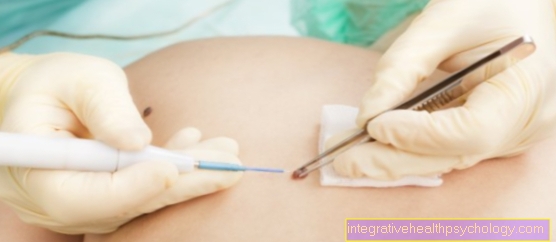
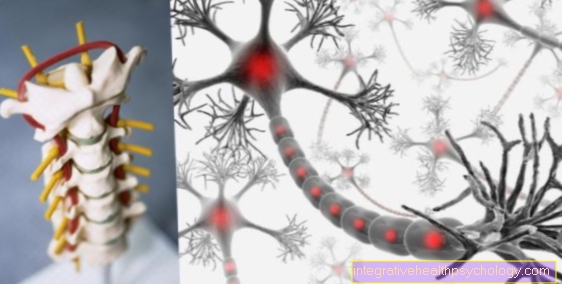
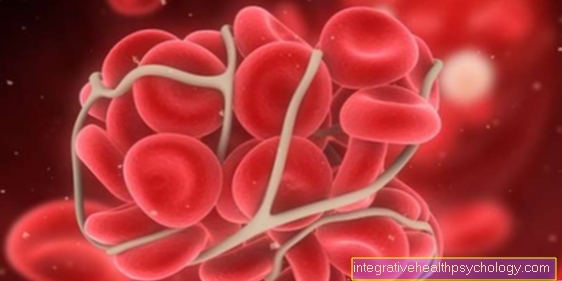
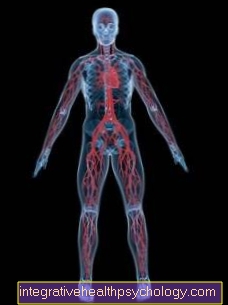

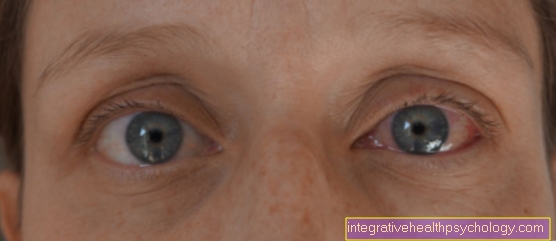

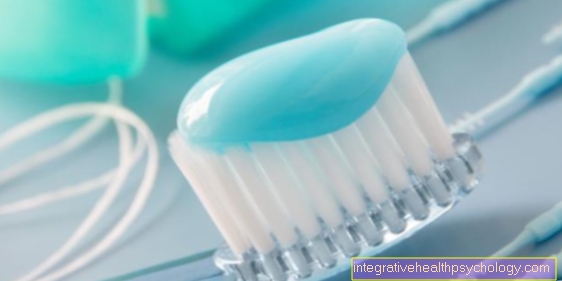



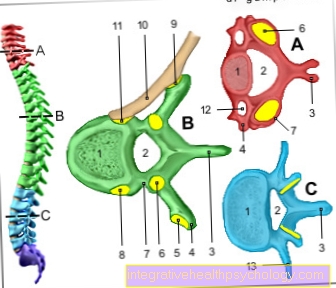




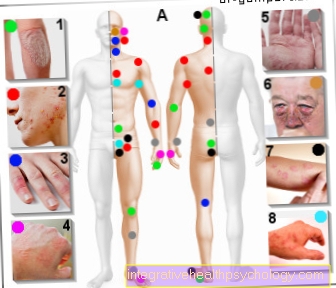



.jpg)
